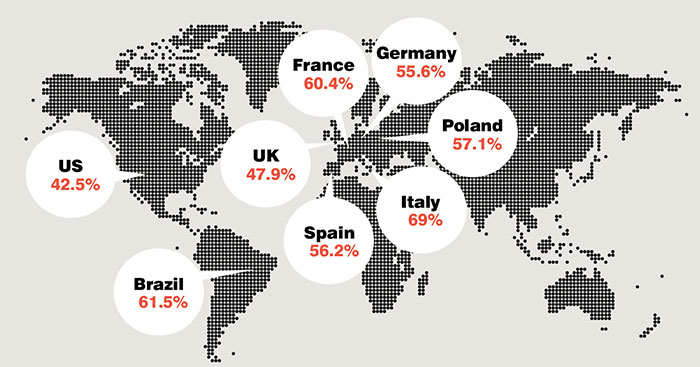Market overview: At a glance
What's in this report?
Introduction
Top 5 trends:
How many consumers avoid products that are harmful to the environment?

Source: Kantar
Key market challenges addressed
The sobering statistics are everywhere: The eight million tonnes of plastic that ends up in the oceans every year; the 91% of plastic that has never been recycled; statistics on rising Co2 levels, sea levels, carbon emission levels; and on declining animal populations and tropical forest sizes.
The beauty industry, which alone generates 120 billion units of packaging every year according to Zero Waste Week data in 2018, has a significant role to play, and many challenges to meet.
According to a report by SparkNews, Impact For Beauty: Sustainability in the Cosmetic Industry, produced in collaboration with Cosmoprof Worldwide Bologna, these include “sustainable sourcing of raw ingredients, energy consumption, waste management and carbon footprint of the whole production chain — from manufacture to packaging, to distribution — biodegradability and lack of human and environmental toxicity and corporate social responsibility in terms of inclusion, fairness and equal opportunities.”
But while the shift towards sustainability can seem overwhelming, and the cost of switching to more sustainable materials and processes daunting, focusing on specific targets that connect to the brand’s purpose, and taking actions that naturally flow from this while communicating the brand’s journey in a transparent way, are measures that brands can take to become more sustainable while also winning the trust of consumers.
